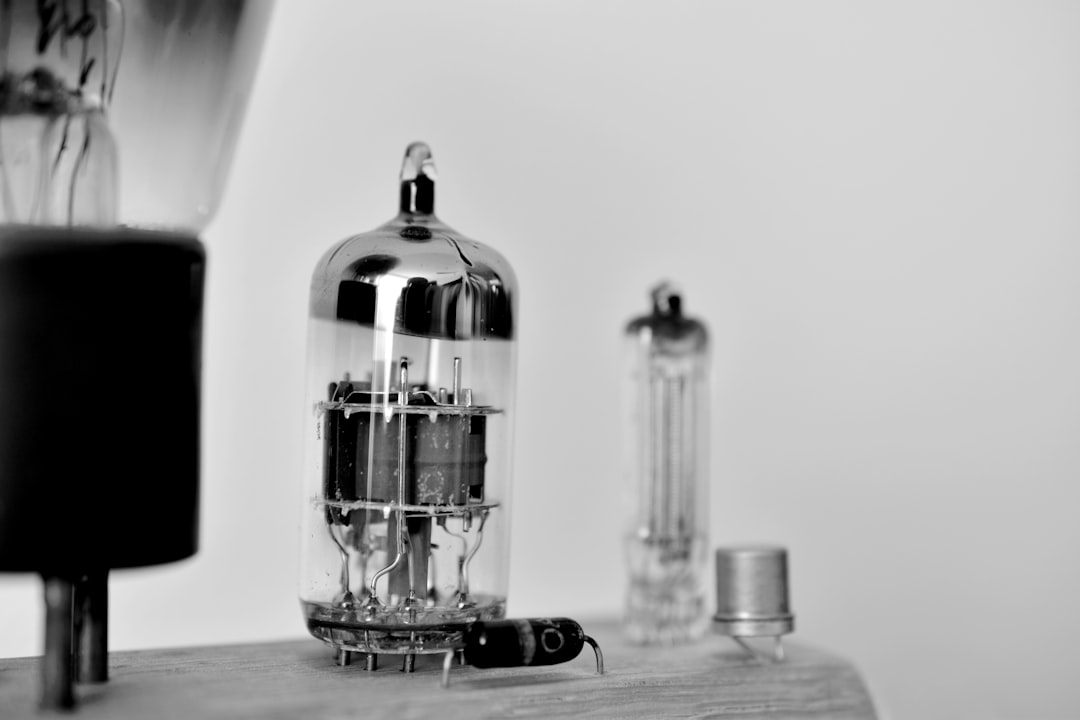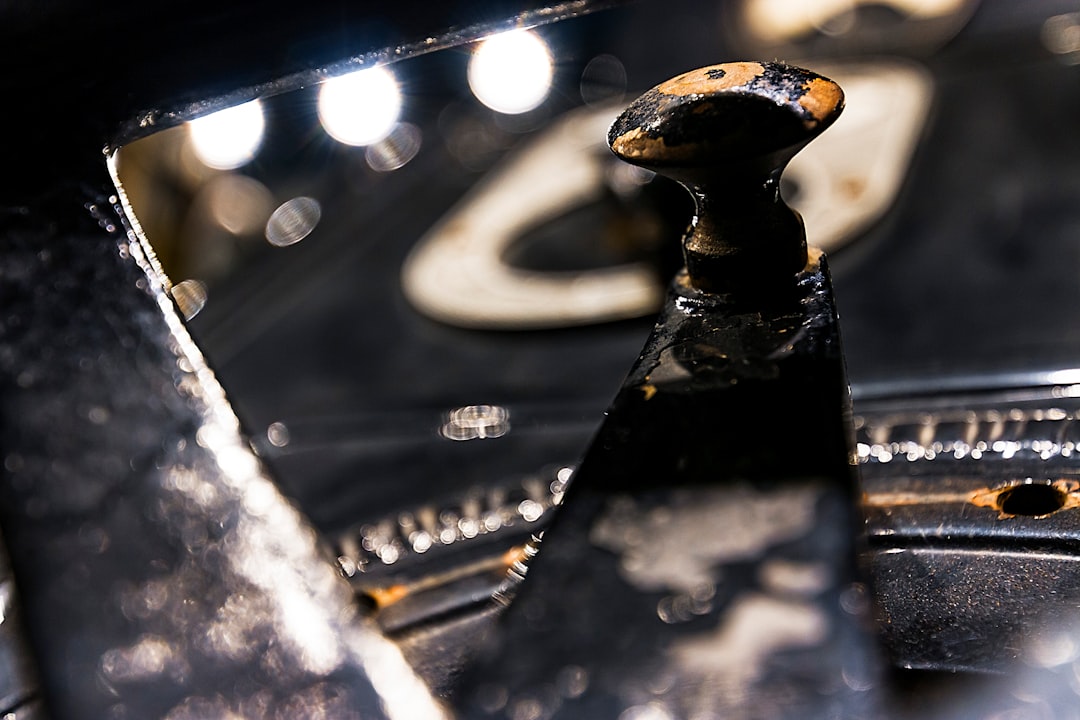How to Identify a Capacitor in a Vintage Tube Radio
When restoring a vintage tube radio, one of the crucial tasks is identifying the capacitor. Knowing how to identify a capacitor in a tube radio is essential for maintenance and repair. From understanding its appearance and markings to using a multimeter for testing, the process requires attention to detail and a methodical approach. In this post, we will explore the step-by-step process of identifying a capacitor in a vintage tube radio, empowering you to confidently work on your radio restoration projects.
Identifying the Capacitor’s Location
When it comes to how to identify a capacitor in a tube radio, the first step is pinpointing its location. In vintage tube radios, capacitors are typically located on the circuit board or chassis. Here’s how you can locate them:
- Visual Inspection: Conduct a thorough visual inspection of the tube radio’s interior. Look for cylindrical or rectangular components with two leads, which are indicative of capacitors.
- Service Manual: Refer to the radio’s service manual if available. It often contains detailed schematics and component layouts, allowing you to locate the capacitors accurately.
- Online Resources: If a service manual is not accessible, look for online resources specific to your tube radio model. Often, vintage radio enthusiasts and experts share valuable insights and information about various radio components.
Once you’ve identified the location of the capacitors, you can proceed to understand their appearance and markings to determine their value and type. Remember, patience and attention to detail are key when identifying capacitors in a tube radio.
Photo by Rafay Ansari on Unsplash
Understanding Capacitor’s Appearance
When it comes to identifying a capacitor in a tube radio, understanding the appearance of capacitors is crucial. Here are some key points to consider when trying to identify capacitors based on their appearance:
- Size and Shape: Capacitors in vintage tube radios can come in various sizes and shapes, including tubular, rectangular, or cylindrical. Pay attention to these physical features when locating and identifying capacitors in a radio circuit.
- Color and Labeling: Capacitors may be color-coded or labeled with markings indicating their value and voltage rating. Look for any color bands, numerical values, or alphanumeric codes on the capacitor body, which can provide valuable information about its specifications.
- Construction: Vintage capacitors can have different construction types, such as paper, foil, or electrolytic. Understanding these construction variations can help in distinguishing different types of capacitors commonly found in tube radios.
By familiarizing yourself with the diverse appearances of capacitors in tube radios, you can improve your ability to identify and differentiate them accurately.
Remember, it’s essential to handle vintage electronics carefully, and if you’re unsure about the identification of a capacitor, it’s best to seek professional assistance to ensure the preservation and proper functioning of your vintage tube radio equipment.
Checking the Markings on the Capacitor
When it comes to identifying a capacitor in a tube radio, checking the markings is a crucial step. Here’s how you can effectively do this:
- Capacitor Markings: Look for any markings or labels on the capacitor. This can include alphanumeric codes or color bands. These markings often indicate the capacitance value, voltage rating, and sometimes the tolerance of the capacitor.
- Deciphering the Markings: Use a reference guide or the manufacturer’s datasheet to decipher the markings. Different manufacturers may use varying codes, so it’s essential to have the right information to interpret these markings accurately.
- Note Down the Information: Once you decipher the markings, make sure to note down the information gathered. This includes the capacitance value in farads, picofarads, or microfarads, as well as the voltage rating.
- Comparison Tables: Consider creating a comparison table with the deciphered information from the capacitor markings. This can help you easily compare and identify the capacitor based on the gathered details.
By checking the markings on the capacitor, you can gather valuable information that will aid in accurately identifying the capacitor in your vintage tube radio.
Measuring the Capacitor’s Value
When it comes to how to identify a capacitor in a tube radio, understanding the capacitor’s value is crucial. Here’s how you can measure it:
- Gather the Equipment: To measure the capacitance of the capacitor, you will need a digital multimeter. Make sure the capacitor is discharged before testing.
- Set the Multimeter: Switch the multimeter to the capacitance measuring mode. Select the range that includes the capacitance value you are expecting.
- Connect the Capacitor: Connect the leads of the multimeter to the terminals of the capacitor. Ensure that the polarity is observed.
- Read the Value: The multimeter will display the capacitance value of the capacitor. Compare this value with the expected or nominal value of the capacitor. If the measured value is significantly different, the capacitor may be faulty and in need of replacement.
Measuring the capacitance value of a capacitor is a valuable step in identifying a capacitor in a tube radio and ensuring the proper functioning of the radio’s circuitry.
Photo by Ries Bosch on Unsplash
Using a Multimeter to Test the Capacitor
When it comes to how to identify a capacitor in a tube radio, using a multimeter is a crucial step in the process. Here’s how you can use a multimeter to test the capacitor effectively:
- Set the Multimeter: Start by setting the multimeter to the capacitance measurement mode. This can usually be found in the menu options or by turning the dial to the capacitance symbol (often "C" or "Cap").
- Discharge the Capacitor: Before testing, ensure that the capacitor is discharged to avoid any electrical shock. Use a discharge tool or a high-value resistor to safely discharge the stored electrical energy.
- Connect the Leads: With the multimeter set and the capacitor discharged, connect the multimeter leads to the capacitor terminals. The polarity is not relevant when testing for capacitance.
- Read the Measurement: The multimeter will display the capacitance value of the capacitor. Compare this value to the rated capacitance of the capacitor. If the reading deviates significantly, it indicates a faulty or degraded capacitor.
Using a multimeter to test the capacitor provides valuable information about its health and functionality, aiding in the identification process.
Remember, always exercise caution and ensure the proper discharge of the capacitor before testing to stay safe.
Identifying the Type of Capacitor
When it comes to identifying the type of capacitor in a vintage tube radio, it’s essential to consider the various types and their specific characteristics. Here’s how to differentiate between different capacitor types:
- Electrolytic Capacitors: These are often larger in size compared to other capacitors and have values written on their casing. They are polarized, meaning they have positive and negative leads.
- Paper Capacitors: These capacitors are encased in a cardboard tube or wrapped in paper, giving them a distinctive appearance. They are non-polarized and can be found in various shapes and colors.
- Mica Capacitors: These capacitors are small, often silver in color, and have a distinct cylindrical or rectangular shape. They are known for their stability and high precision.
- Ceramic Capacitors: These are small, often disc-shaped, and can be found in a variety of colors. They are non-polarized and are commonly used for high-frequency applications.
By familiarizing yourself with these different types of capacitors, you can accurately identify and understand the role of each type within the vintage tube radio circuit. Always handle capacitors with care and ensure that you have the necessary knowledge and experience to work with them safely.
Remember to use the focus keyword "how to identify a capacitor in a tube radio" in a natural and informative manner throughout the section to maintain a good keyword density.
Researching the Capacitor’s Era and Manufacturer
When it comes to understanding the capacitor in a vintage tube radio, researching its era and manufacturer can provide valuable insights. Here’s how to go about it:
- Era Research: Look for resources, such as vintage electronics forums, books on radio restoration, or historical websites, that can provide information about the era when the capacitor might have been manufactured. Understanding the technology and materials commonly used during that time can help narrow down the capacitor’s characteristics.
- Manufacturer Investigation: Investigate the manufacturer’s history to gain an understanding of their typical capacitor designs, materials, and labeling conventions. Many manufacturers had specific codes or logos that they imprinted on their components, and knowing these can help in identifying the origin of the capacitor.
- Comparison Tables: Create a comparison table with details of capacitors used by different manufacturers during specific eras, which can aid in matching the characteristics of the capacitor in question with those commonly used during that time period.
Researching the capacitor’s era and manufacturer can provide important context for identifying and understanding its specific features and characteristics. This information can be invaluable, especially when dealing with vintage electronics where standardization was less common.
Remember, if you’re unsure about your findings, seek professional help to ensure that the capacitor is correctly identified.
Photo by Salah Ait Mokhtar on Unsplash
Seeking Professional Help if Unsure
If you have gone through the steps of identifying the capacitor in your vintage tube radio and still feel unsure or confused, it’s okay to seek professional help. Sometimes, identifying capacitors in older electronics can be challenging, especially if you are new to the process.
Here are the reasons why seeking professional help can be beneficial:
- Expertise: Professionals have experience and expertise in dealing with vintage tube radios and their components. They can quickly identify and interpret the markings and characteristics of capacitors.
- Specialized Equipment: Professionals often have specialized equipment that can accurately test and measure the value of capacitors, ensuring precision in their identification.
- Preservation of the Radio: Vintage tube radios are delicate and valuable. Seeking professional help can prevent accidental damage to the radio that may occur during amateur attempts at capacitor identification.
- Peace of Mind: Consulting a professional can provide peace of mind. You can be assured that the capacitor in your radio is accurately identified, and any necessary maintenance or replacement can be done correctly.
Remember, it’s always better to be safe than sorry when dealing with valuable vintage electronics. If you’re unsure about identifying the capacitor in your tube radio, don’t hesitate to consult a professional for assistance.
Frequently Asked Questions
What is a capacitor in a vintage tube radio?
A capacitor in a vintage tube radio is an electronic component that stores and releases electrical energy. It is used to filter and smooth the flow of current, as well as to block the flow of direct current (DC) while allowing alternating current (AC) to pass. Capacitors in vintage radios play a crucial role in maintaining the stability and quality of the audio signals.
How do I identify a capacitor in a vintage tube radio?
To identify a capacitor in a vintage tube radio, look for cylindrical or rectangular-shaped components with two leads (wires) coming out of each end. Capacitors are typically labeled with their capacitance value and voltage rating. They may also be color-coded or have specific markings that indicate their type and value. Additionally, capacitors are often found near tubes, circuit boards, or power supplies in vintage radios.
Why are capacitors important in vintage tube radios?
Capacitors are important in vintage tube radios because they help in filtering out unwanted noise and interference from the electrical signals. They also ensure that the radio operates at the correct frequency and that the audio output is clear and free from distortion. Without capacitors, the performance of the radio’s circuits could be compromised, leading to poor sound quality and instability in operation.
Can I replace a defective capacitor in a vintage tube radio?
Yes, you can replace a defective capacitor in a vintage tube radio. It is important to use capacitors with the same or higher voltage rating and matching capacitance value. Additionally, it is recommended to use high-quality, vintage-correct capacitors to maintain the authenticity and performance of the radio. Proper desoldering and soldering techniques should be applied when replacing capacitors to avoid damage to the radio’s components.






